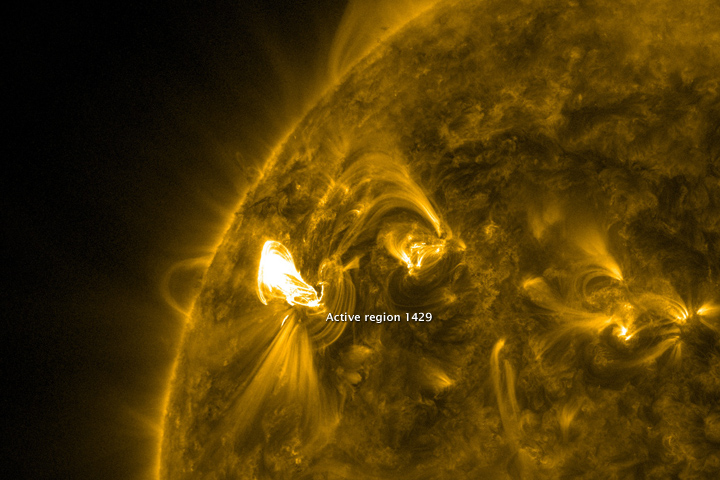Solar Storm No Threat to Space Station Astronauts, NASA Says

The intense solar storm that spilled huge amounts of radiation into space this week poses no risk to the six astronauts on the International Space Station, NASA officials say.
The sun erupted in two powerful solar flares Tuesday (March 6), blasting a wave of solar plasma and energetic particles out into space. This radiation has proven dangerous to satellites — for example, some equipment on the European Space Agency's Venus Express spacecraft was blinded by the blast — and could even disrupt power grids on Earth.
But the International Space Station and its crew aren't in a position to feel the sun's wrath this time, NASA officials said.
"No danger; no sheltering required," NASA spokesman Rob Navias told SPACE.com.
In the past, astronauts have occasionally had to hide out in protected areas of spacecraft parked at the space station to take shelter from radiation released by solar storms.
But this time, space station commander Dan Burbank of NASA and his cremates, NASA astronaut Don Pettit, Russian cosmonauts Anton Shkaplerov, Anatoly Ivanishin and Oleg Kononenko, and European Space Agency astronaut André Kuipers, should be safe.
"Solar flares no concern for #ISS or its crew," NASA wrote in a Twitter update today (March 8). "Doctors at Mission Control in Houston always monitor radiation levels, which are acceptable."
Get the Space.com Newsletter
Breaking space news, the latest updates on rocket launches, skywatching events and more!
The sun's latest solar storm is one of the most powerful in the last five years, but similar occurrences are likely to get more common as the sun gears up for a period of solar maximum in 2013. Solar storms, which are caused by intense magnetic activity on our nearest star, tend to rise and fall in frequency over an 11-year cycle.
You can follow SPACE.com assistant managing editor Clara Moskowitz on Twitter @ClaraMoskowitz. Follow SPACE.com for the latest in space science and exploration news on Twitter @Spacedotcom and on Facebook.
Join our Space Forums to keep talking space on the latest missions, night sky and more! And if you have a news tip, correction or comment, let us know at: community@space.com.

Clara Moskowitz is a science and space writer who joined the Space.com team in 2008 and served as Assistant Managing Editor from 2011 to 2013. Clara has a bachelor's degree in astronomy and physics from Wesleyan University, and a graduate certificate in science writing from the University of California, Santa Cruz. She covers everything from astronomy to human spaceflight and once aced a NASTAR suborbital spaceflight training program for space missions. Clara is currently Associate Editor of Scientific American. To see her latest project is, follow Clara on Twitter.